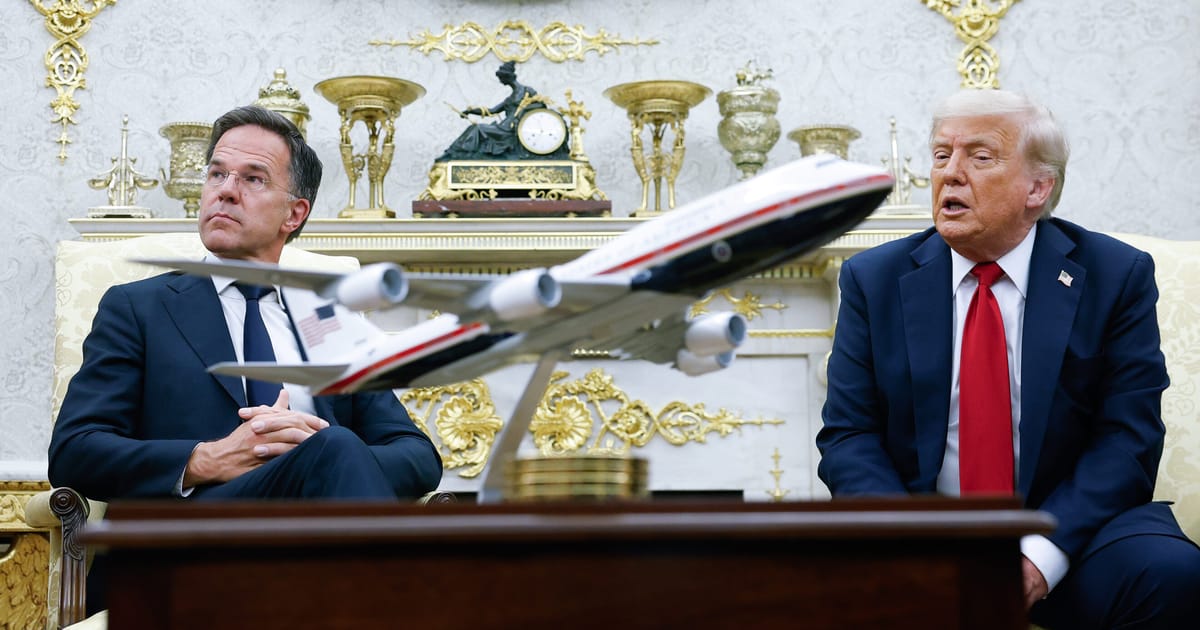

In the landscape of international relations, recent developments have brought attention to the evolving dynamics between NATO, Ukraine, and Russia. The United States, under the leadership of President Donald Trump, has taken significant steps in collaboration with NATO allies to bolster Ukraine’s defense capabilities. This strategic move comes alongside a broader backdrop where leadership transitions and diplomatic endeavors seek to shape a more stable and secure region.
During a recent press meeting, President Trump expressed a shift in his stance regarding NATO. Once critical of the alliance, labeling it as “obsolete,” Trump now acknowledges its evolving nature and essential role in global security, particularly in relation to current geopolitical tensions involving Russia and Ukraine. Trump’s recent statements highlight NATO’s transformation into what he describes as the “opposite of obsolete,” reaffirming the importance of collective defense agreements. His remarks suggest a renewed commitment to the alliance, signaling a positive direction for NATO’s future engagements.
Central to these developments is a pivotal agreement between the United States and NATO allies aimed at significantly enhancing Ukraine’s military capabilities. This agreement facilitates the delivery of advanced military equipment, including Patriot missiles, to Ukraine. The financial burden of these provisions is expected to be shared among European allies. President Trump emphasized that billions of dollars’ worth of military aid from the United States would be swiftly directed to the Ukrainian frontlines, marking a substantial escalation in NATO’s support for Ukraine amid ongoing tensions with Russia.
The agreement underscores the alliance’s unified approach toward addressing challenges posed by Russia. Trump issued a stern warning of severe sanctions should Russia fail to engage in peace efforts within a stipulated 50-day period. This assertive stance reflects a strategic calculus aimed at compelling Russia to engage diplomatically while simultaneously equipping Ukraine with the resources needed to safeguard its sovereignty.
Parallel to international military and diplomatic engagements, Ukraine itself is navigating significant internal changes. Recent reports from Ukraine indicate a notable transition in the country’s leadership, with President Volodymyr Zelensky having restructured his government. A key aspect of this reshuffle involves the appointment of Yulia Svyrydenko as the first female Prime Minister of Ukraine. Born in December 1985 in Cherniv, Svyrydenko is a distinguished economist, having completed her studies at the National University of Commerce and Economics in Kyiv. Her appointment is seen as a step toward enhancing the country’s governance framework, bringing a fresh perspective to policy-making processes.
Svyrydenko’s appointment reflects Ukraine’s broader commitment to embracing diversity and progressive leadership amidst complex challenges. Her background, marked by determination and experience, positions her as a dynamic figure capable of steering Ukraine through both domestic reforms and international engagements. Commentary from Ukrainian political analysts suggests a cautious optimism, viewing Svyrydenko’s leadership as an opportunity to invigorate Ukraine’s strategic focus and foster resilience amid ongoing geopolitical dynamics.
The interplay between these developments—NATO’s strengthened engagement, Ukraine’s bolstered defense capabilities, and internal leadership transitions—casts a positive light on collective efforts to navigate complex international relations. As Ukraine fortifies its defense posture with the backing of NATO allies, the broader region watches closely, anticipating the ripple effects these developments may have on peace and stability in Eastern Europe.
In an interconnected world, where the challenges of one nation reverberate across borders, these collaborative endeavors serve as a reminder of the power of cooperation in addressing global challenges. The emphasis lies not solely on geopolitical posturing but also on the shared pursuit of peace and security. As NATO, Ukraine, and its leadership engage in dialogue and action, the world observes the unfolding of a narrative that emphasizes hope, resilience, and the ever-present possibility of a harmonious global community.
Source: {link}
